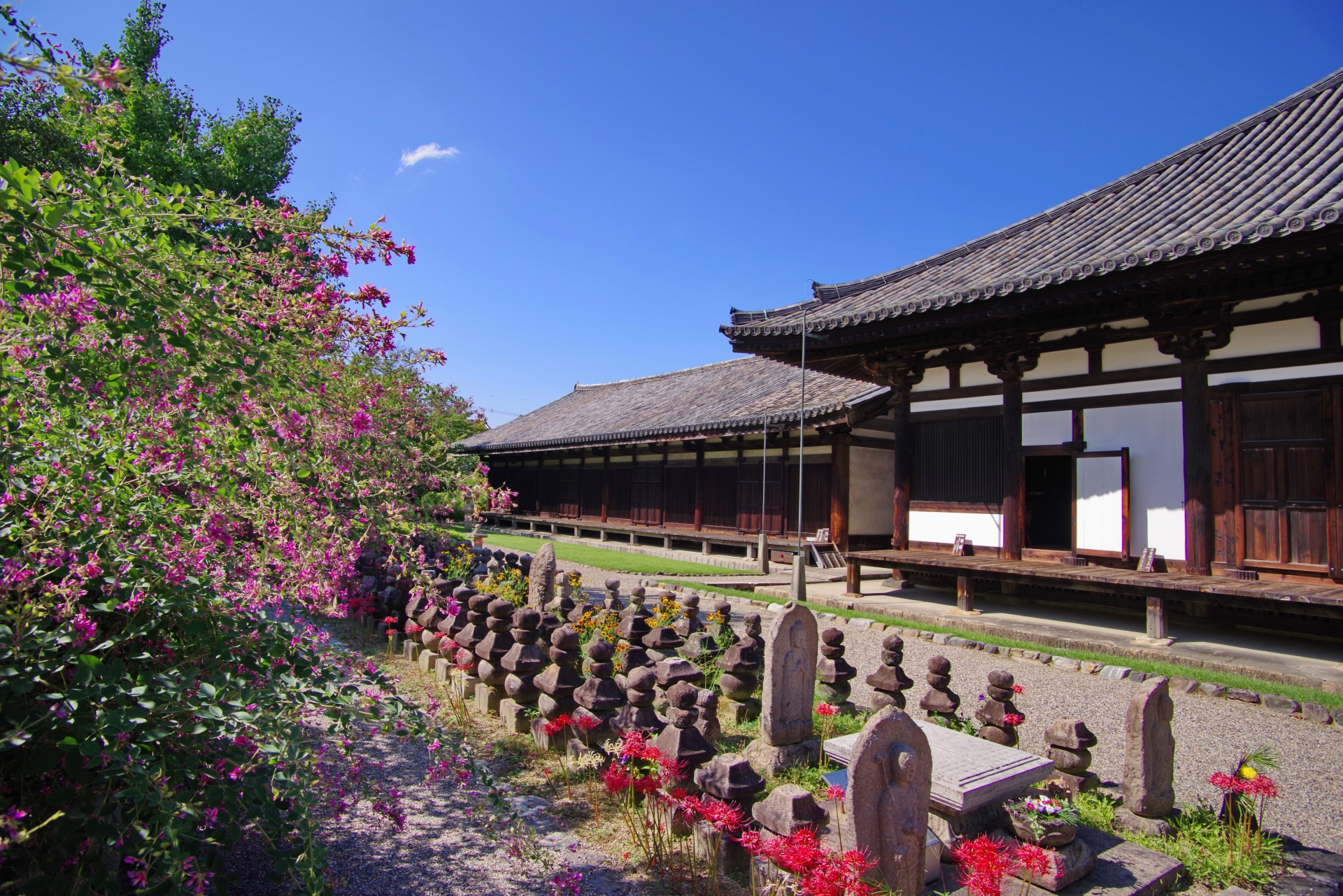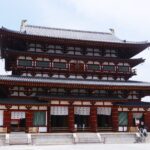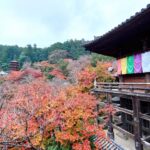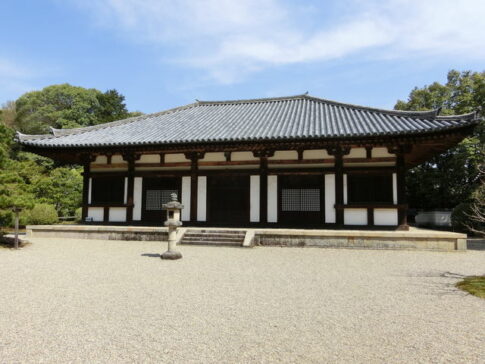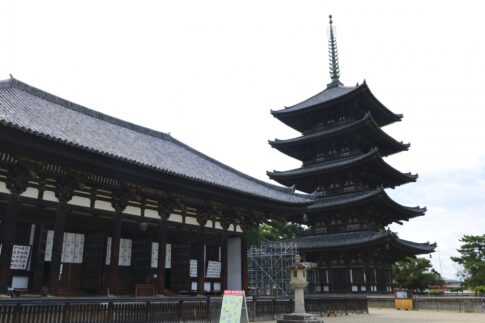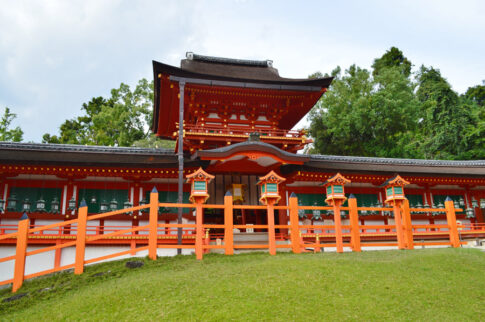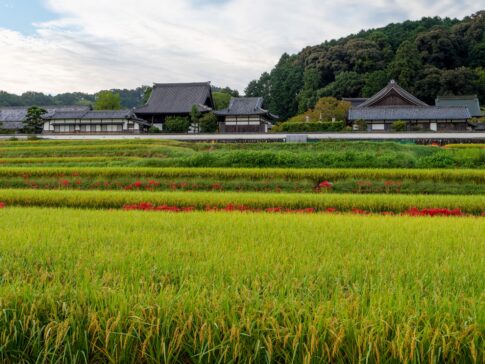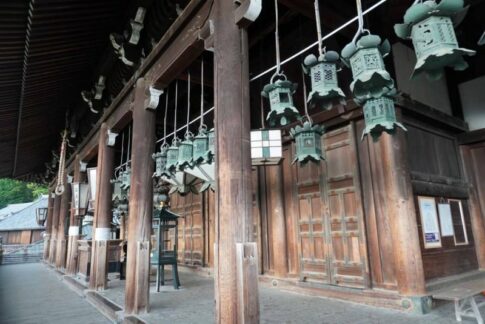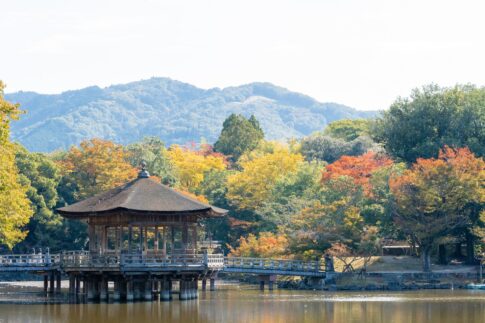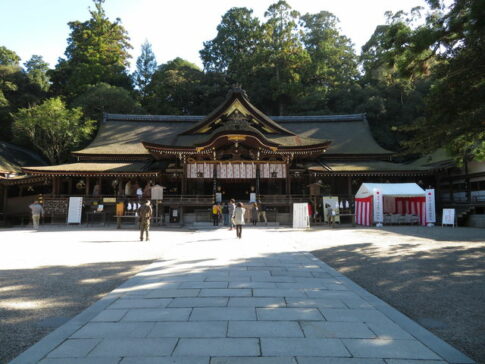With the relocation of the capital to Heijo, the first full-scale temple complex in Japan, Hokoji Temple (Asuka Temple), changed its character from a Soga clan temple to an official grand temple, and was relocated to a new building, Gangoji Temple.
Today we introduce this temple’s highlights.
What you need to know before visiting Gangoji Temple
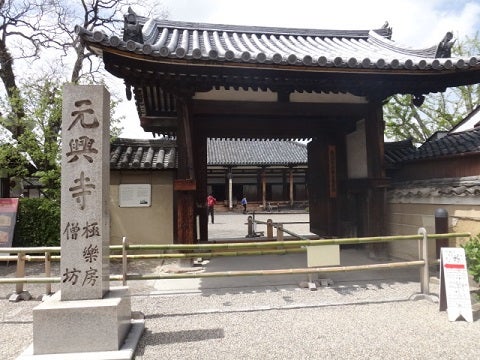
① History of Gangoji Temple
During the Fujiwara and Nara periods, Gengoji was a government temple with a permanent residence of three treasures under the Buddhist policy of the Soga clan of the Subutsu school and under the control of the Imperial Court (priesthood). In the Heian period, however, with the collapse of the Ritsuryo system, there were no more official temples, and they were incorporated under the control of Kofukuji and Todaiji, which were also Gonmon temples.
In the Kamakura period (1185-1333), the temple buildings of Gengoji were dismantled and the pagodas were dispersed.
In the Muromachi period (1333-1573), Gokurakubo, the remains of a monks’ monastery, came under the control of Kofukuji’s Daijo-in Temple, and the monks were considered to be of the Gishinji (Daianji) Mon school (Saidaiji school of Shingon Ritsu).
During the Edo period (1603-1867), the temple was under the direct control of Saidaiji and produced a large number of executives.
The school ceased to exist after the Meiji Restoration (1868-1912), and the temple became uninhabited.
However, in 1942, the temple came under the control of Hozanji Temple, the head temple of the Shingon Ritsu Sect, and was rehabilitated.
The temple was restored in the postwar period with the enactment of the Law for Protection of Cultural Properties and the establishment of a religious corporation.
② About National Treasures and World Heritage Sites in Gangoji Temple
The World Cultural Heritage “Ancient Capital of Nara” consists of eight properties.
Among them, Gonko-ji Temple is registered as National Treasure Gokurakudo (Gokurakudo Main Hall) and National Treasure Zen Room (Gokurakudo Zen Room), which are the remains of old monks’ quarters in a small space within the precincts of Gokurakudo Temple, a historic site.
The East Gate is also registered as an Important Cultural Property.
This temple is only a small part of the Gonkoji Temple, which is a government-run temple built after Asukadera Temple (Hokoji Temple), the first full-scale temple complex in Japan, was relocated to a new building after the capital was moved to Heijo.
The large temple complex, once located in the eastern outer part of the Heijo-kyo Capital and bordered by Kofuku-ji Temple to the north and south, has disappeared due to repeated damage from the earthquake and tsunami, leaving only this area, the historic site of the Gango-ji Pagoda, the historic site of the Kotouin site, and the town name of Naramachi, which is derived from the temple, as barely recorded.
The fact that this almost forgotten temple was inscribed on the World Heritage List is due in part to the postwar Cultural Properties Protection Law.
This is because many people have been engaged in diligent research and study, and a large amount of funds, mainly from the national treasury, have been injected into the preservation project to prove the authenticity of the temple.
Many of the buildings and Buddhist statues owned by the temple have been designated as cultural properties.
③ Gangoji Temple’s Tradition: the Gagoze
Once upon a time, a demon, a manifestation of an evil spirit, appeared in the bell tower of Gangoji Temple, scaring the people of the capital to no end.
At that time, a child of great power, who was the child of thunder, entered the temple from Owari Province, ripped off the hair of the demon, and exterminated it.
From this story, the thunderbolt that exterminates evil demons was deified and called Hachiraijin or Gangoshin, and came to be represented as an demon-like figure.
The demons associated with Gangoji Temple are pronounced gagoze, gagoji, or gango, and they seem to have been handed down throughout Japan.
Something that is not seen very often these days is the gesture of children sticking out their tongues and holding their fingers under their eyes to frighten people by saying “akkambe” or “bek”. An old form of onigoto (devil’s game), bekako, also called mekago (eye scratch) or mekakako, is “bekako” or “bekkanko,” possibly a variation from “beggango.
Gango” is derived from “gangou,” which, like “gagoji” and “gagose,” seems to be a demon word originating from Gankoji Temple (Gangoji).
According to an old-timer from the Awaji and Tokushima area, people used to say “Gagoji is coming” or “Gagoze is coming” to discuss a child who would not stop crying, and called a cheerful child “Gango” or “Gambou”.
According to a book that explains the customs and manners of the early modern period, “gagoji” and “gagoze” were used to intimidate children, and they sometimes imitated demons by opening their eyes and mouths wide.
The word “gagoze” was used to refer to a demon that used to be at Gangoji Temple, so it was called “gagozi” (Gankoji), but later the temple’s name was changed to “gagoze” (Gankozejin), according to a legend.
In the Kyogen play “Shimizu,” Taro Kaja refuses to visit Kiyomizu Temple on behalf of the temple because he is afraid that “Gagoze” will appear. This line still remains today.
In other words, it is clear that Gankoji was more a synonym for “demon” than a temple name.
The legend of the demons of Gangoji Temple is said to be based on the story of Dojo Houshi in the “Nihon ryoiki (Records of Japanese Spiritual Anomalies).
Dojo Houshi was born as the son of a thunderbolt, became a great power, defeated the powerful forces of the Imperial Court, exterminated the demons of Gangoji Temple, demonstrated his ability to draw water from the terada, and later became a great Houshi.
However, the story of the extermination of the ogres was highlighted and interpreted by the priests, and the story was later connected to Oni-Ji (an event to welcome the spring).
At Genko-ji Temple, the Dojo priest who vanquished the demons is deified and referred to as “Yaoikazuchi no kami” or “Genko-jin,” and a strange demon mask is passed down to the temple. They may symbolize the demons that helped farmers, exterminated demons, and promoted Buddhism.
Since ancient times, demons have been believed to hide in the dark, daring people and symbolizing evil and evil spirits.
To exterminate these demons, the existence of an ogre deity (thunder) beyond demons such as Won Hsing-gami was assumed.
The ogre’s courtesy like Motokojin, the devil tiles on the roof, and the “namahage” are not terrifying things that people must avoid (evil ogres), but rather beings that evil ogres fear (good ogres).
Evil demons are said to have three fingers.
They have only the three poisonous vexations (greed, anger, and complaining).
They have lost the two precious fingers of wisdom and compassion.
Those who are active as demi-gods are to be eagerly awaited, but those who are not similar demons must be driven away, or else spring will not come.
Summary
As mentioned above, Gangoji Temple has very unique attractions.
If you are interested in, please visit Gangoji Temple.
